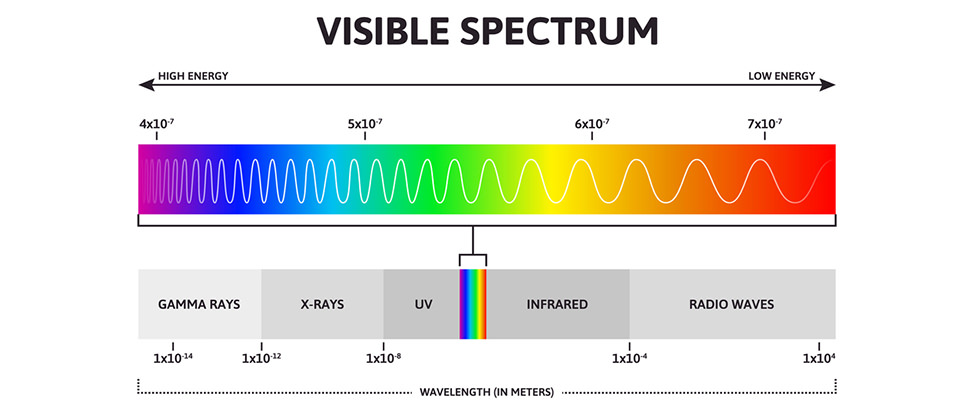What Is Spectral Power Distribution, and Why Is It Important for Plants
Have you ever noticed that two grow lights with the same wattage can deliver completely different results? It’s frustrating, but that’s because wattage alone doesn’t tell the full story. One key factor often overlooked is SPD (Spectral Power Distribution).
Not familiar with SPD? It refers to the exact intensity of light a source emits across the entire color spectrum. While we tend to focus on visible light, what we can see, plants perceive and respond to light in far more complex ways.
To grow more effectively, it’s important to understand SPD and how it can make a real difference in your plants' growth. Let’s explore why it matters.
What is spectral power distribution?
Spectral Power Distribution (SPD) is a measurement that describes how much light a source emits at each wavelength across the light spectrum. Think of it as a detailed recipe for light, showing the exact wavelengths and how much of each is present.
Just as humans perceive different light colors like white, pink, or purple based on the mix of wavelengths, artificial lighting also consists of a specific ratio of these wavelengths.
For plants, wavelengths are particularly important, as they play a key role in photosynthesis. An SPD graph helps growers see exactly which wavelengths are being emitted by a light source, allowing them to tailor lighting conditions to support plant health and maximize yield.

SPD and plant development
SPD plays a crucial role in plant development by influencing how plants absorb and use light to drive growth and productivity.
At the molecular level, plants have specialized photoreceptors, such as cryptochromes, phototropins, and phytochromes. Each of them is sensitive to different parts of the light spectrum. When activated, these photoreceptors trigger hormonal and developmental processes that directly affect plant growth.
Blue light (400–500 nm) strongly activates cryptochromes and phototropins, which are responsible for regulating key functions like stomatal opening, phototropism (growth toward light), and the inhibition of stem elongation. Plants grown under blue-rich light tend to develop compact, sturdy structures with thicker leaves. This makes blue wavelengths especially beneficial during vegetative growth and for preventing seedling stretch.
Red light (600–700 nm), particularly around 660 nm, primarily activates phytochromes. These regulate essential processes such as flowering, germination, and shade-avoidance responses. Red-dominant light spectra can accelerate flowering and fruiting, making them highly valuable during the reproductive stages of plant development.
Green light (500–600 nm) penetrates deeper into the plant canopy than blue or red light, reaching lower leaves that might otherwise be shaded. Recent studies have shown that green light contributes meaningfully to photosynthesis in these lower layers and also influences plant morphology in ways that are distinct from other wavelengths.
Far-red light (700–800 nm), though outside the photosynthetically active radiation range, serves an important signaling function. It helps adjust the red to far-red ratio that plants use to sense neighboring vegetation. This can trigger specific developmental responses such as stem elongation or earlier flowering, especially in certain species sensitive to canopy competition.

Beyond PAR, why SPD matters more than simple intensity
In essence, while PAR tells you how much light is available, SPD tells you the quality of that light.
When it comes to grow lights, most people focus on PAR. PAR tells us how much light a plant can use for photosynthesis, specifically in the 400–700 nm range. What PAR doesn’t tell you is what kind of light is being delivered. That’s where SPD comes in.
SPD shows how the light is spread across different wavelengths, including light outside the PAR range. For example, UV light, which is outside the PAR range, can boost flavors, smells, and nutrients by triggering the production of secondary compounds. Similarly, Far-red light can help influence flowering, stretching, and plant shape, especially in crops like cannabis, tomatoes, and leafy greens.
Consider two LED grow lights with identical PAR values. On paper, they may seem equally effective. However, if one light delivers a narrow spectrum focused solely on blue and red wavelengths, while the other offers a well-balanced, full-spectrum output, the resulting plant development will differ significantly.
That’s why more growers today are moving toward spectrum-driven growing, choosing lights based on the specific spectral needs of their crops at each stage of growth (seedling, vegetative, flowering). By matching the light spectrum to your plant’s biology, you can improve not just growth rates, but also taste, aroma, color, and yield.
As a horticultural lighting manufacturer, Atop Lighting specializes in customized lighting solutions tailored to your crop and cultivation goals. If you need support with your project, our team is here to help.

